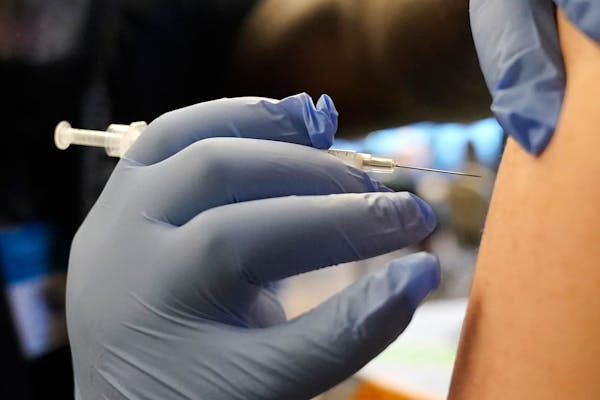COVID-19 cases in Minnesota's hospital intensive care units are nearing pandemic lows even as coronavirus infections are nudging upward.
Minnesota reported 23 COVID-19 ICU hospitalizations on Friday, which is well below the peak of 369 on Dec. 15 and is the lowest total since mid-July.
The decline occurred despite an increase in total COVID-19 hospitalizations in Minnesota from 183 on April 10 to 207 on Friday. The seven-day average of new coronavirus infections also rose from 373 per day in the week ending March 20 to 615 per day in the week ending April 13.
Health officials hope that the COVID-19 pandemic continues to follow a trend of declining severity and ICU admissions that began in mid-December when the severe delta variant of the coronavirus was replaced by a faster-spreading but milder omicron variant. Patients placed in ICUs often needed ventilators to breathe and had much higher death rates.
The decline in ICU hospitalizations likely reflects the number of people with immunity from COVID-19 vaccinations or from recent infections during the omicron wave, said Michael Osterholm, director of the University of Minnesota's Center for Infectious Disease Research and Policy. Studies have shown that the COVID-19 vaccines are more effective at preventing deaths and hospitalizations than infections.
"The vaccine and previous immunity surely can have a big impact" on the number of severe COVID-19 cases and hospitalizations, he said.
However, he cautioned that immunity wanes and future viral strains could be more resistant to the vaccine, so the current progress could be temporary. The pandemic has been unpredictable, he added. Researchers still are baffled, for example, about why an alpha viral variant caused COVID-19 waves in Minnesota and Michigan at this time last year but not in other states.
"Some of this, we just don't know," he said.
All Minnesota counties are listed by the Centers for Disease Control and Prevention at low COVID-19 risk levels, meaning they don't carry recommendations for broad public, indoor mask-wearing.
A new BA.2 subvariant has emerged and was responsible for more than 90% of the viral load found in Twin Cities' wastewater last week, but it also appears to cause a lower rate of severe illness than other variants.
Minnesota on Monday reported another four COVID-19 deaths, raising its pandemic toll to 12,468. No more than four COVID-19 deaths have occurred on any one day in Minnesota so far this month. Minnesota had two days in March in which zero COVID-19 deaths occurred.
An exponential increase in infections eventually could cause an increase in ICU placements and deaths. For now, Mayo Clinic's 14-day forecast projects only steady growth in infections in Minnesota through April.
State health officials urged Minnesotans to stay up to date with COVID-19 vaccinations, which means either completing the initial series or seeking first boosters to maintain immunity levels. Only 49% of eligible Minnesotans age 5 and older are considered up to date.
Second boosters are offered as well for people who are 50 or older, have weakened immune systems or have received the less-effective Johnson & Johnson COVID-19 vaccine.
Fully vaccinated people made up 37% of the 3,600 COVID-19 deaths in the second half of 2021 in Minnesota, but they made up 56% of the 1,100 deaths through mid-March of this year, according to state breakthrough data released Monday.
Even the latest numbers show that the vaccine remains protective, though, when considering that 79% of Minnesota's adults are fully vaccinated with the initial shots.
The fully vaccinated population includes more elderly people at greatest risk of severe COVID-19 and early vaccine recipients who haven't received boosters and have little immunity left. If the vaccine wasn't working at all, then the rate of deaths in that population would be much higher.
Minneapolis man gets prison after son died eating fentanyl pills resembling children's vitamins
Prominent basketball coach makes sudden switch of suburban schools

Latina music star Becky G will kick off 2024′s Minnesota State Fair grandstand series

